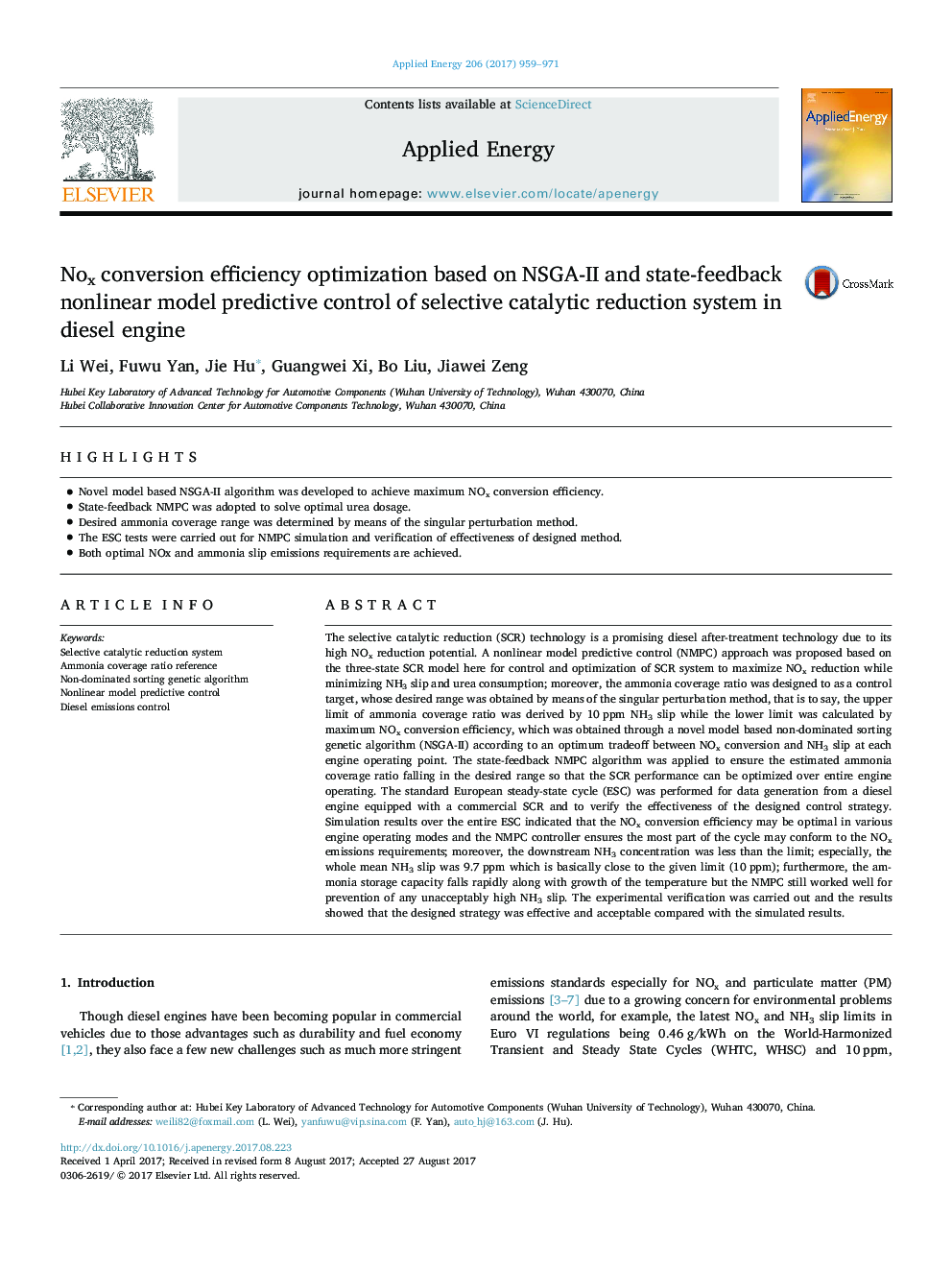| کد مقاله | کد نشریه | سال انتشار | مقاله انگلیسی | نسخه تمام متن |
|---|---|---|---|---|
| 4915733 | 1428084 | 2017 | 13 صفحه PDF | دانلود رایگان |
عنوان انگلیسی مقاله ISI
Nox conversion efficiency optimization based on NSGA-II and state-feedback nonlinear model predictive control of selective catalytic reduction system in diesel engine
دانلود مقاله + سفارش ترجمه
دانلود مقاله ISI انگلیسی
رایگان برای ایرانیان
کلمات کلیدی
موضوعات مرتبط
مهندسی و علوم پایه
مهندسی انرژی
مهندسی انرژی و فناوری های برق
پیش نمایش صفحه اول مقاله

چکیده انگلیسی
The selective catalytic reduction (SCR) technology is a promising diesel after-treatment technology due to its high NOx reduction potential. A nonlinear model predictive control (NMPC) approach was proposed based on the three-state SCR model here for control and optimization of SCR system to maximize NOx reduction while minimizing NH3 slip and urea consumption; moreover, the ammonia coverage ratio was designed to as a control target, whose desired range was obtained by means of the singular perturbation method, that is to say, the upper limit of ammonia coverage ratio was derived by 10 ppm NH3 slip while the lower limit was calculated by maximum NOx conversion efficiency, which was obtained through a novel model based non-dominated sorting genetic algorithm (NSGA-II) according to an optimum tradeoff between NOx conversion and NH3 slip at each engine operating point. The state-feedback NMPC algorithm was applied to ensure the estimated ammonia coverage ratio falling in the desired range so that the SCR performance can be optimized over entire engine operating. The standard European steady-state cycle (ESC) was performed for data generation from a diesel engine equipped with a commercial SCR and to verify the effectiveness of the designed control strategy. Simulation results over the entire ESC indicated that the NOx conversion efficiency may be optimal in various engine operating modes and the NMPC controller ensures the most part of the cycle may conform to the NOx emissions requirements; moreover, the downstream NH3 concentration was less than the limit; especially, the whole mean NH3 slip was 9.7 ppm which is basically close to the given limit (10 ppm); furthermore, the ammonia storage capacity falls rapidly along with growth of the temperature but the NMPC still worked well for prevention of any unacceptably high NH3 slip. The experimental verification was carried out and the results showed that the designed strategy was effective and acceptable compared with the simulated results.
ناشر
Database: Elsevier - ScienceDirect (ساینس دایرکت)
Journal: Applied Energy - Volume 206, 15 November 2017, Pages 959-971
Journal: Applied Energy - Volume 206, 15 November 2017, Pages 959-971
نویسندگان
Li Wei, Fuwu Yan, Jie Hu, Guangwei Xi, Bo Liu, Jiawei Zeng,